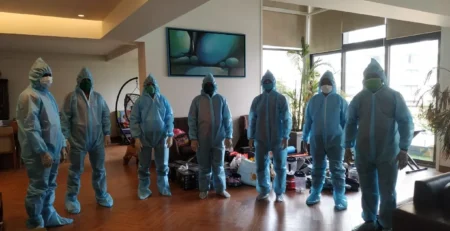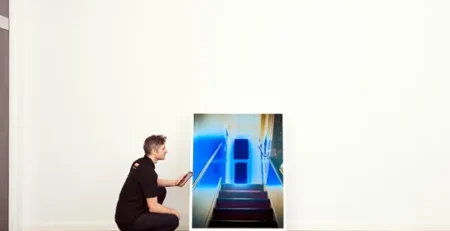Dublin’s Dead Zoo Decant – Part 1
- Company News

Inside the National Museum of Ireland – Natural History
They say what goes up must come down, and museum displays are no different. ICEFAT agents are often installing cultural treasures across the world, but also, just as often, carry out the reverse. In Dublin, the National Museum of Ireland – Natural History (NMINH) is undergoing a major refurbishment and Irish ICEFAT member Maurice Ward Art Handling has played a leading role in the first stages of the ‘decant’ of the museum locally known affectionately as the ‘Dead Zoo’.
The Dead Zoo occupies a special place in Irish society and history. It is filled with approximately 10,000 exhibits, consisting of skeletons, taxidermied animals and scientific specimens. The museum is a place of wonder for school children and adults alike, with specimens displayed across four floors and even suspended from the ceiling. Some of these objects had not been moved over 100 years, so the operation has been a conservation and logistics learning curve for all involved.
ICEFAT agents offer industry leading fine art shipping services in their respective territories, and regularly work with national museums to move their permanent and temporary collections. Normally, however, these collections consist of man-made art and historical artifact collections, rather than taxidermied animals where there is only an estimation of the processes that have been involved in creating the final specimen. Deinstalling, packing, transporting, and storing taxidermied animals and other preserved specimens requires caution and close supervision from a conservator, as many of these objects had not been transported in living memory.
After a competitive tender, Maurice Ward Art Handling was awarded the contract to conduct the multi-stage, multi-trip, multi-month operation to move parts of the Dead Zoo collection to offsite storage, emptying the top two floors of the Museum. Beginning in August 2020 and ending in June 2021, the project involved 12 Maurice Ward staff including specialised technicians (with experience in the packing and conservation of delicate and robust objects), transport drivers and documentation staff. Margarita Vásquez Cárdenas was the Project Coordinator for Maurice Ward. She worked closely with the team at the National Museum of Ireland, which was led by Nigel Monaghan, Keeper at the Natural History museum, and Paolo Viscardi, Senior Curator at the museum. Nigel says that although most of the team had not worked together before, “a strong team dynamic evolved” among them when planning the operation.

Maurice Ward Art Handling’s Art Handler, Niall Brennan working with the Museum’s Senior Curator, Paolo Viscardi in the careful removal of the skull of a Giant Irish Deer specimen in preparation for safe transport.
The refurbishment was time sensitive at various stages of the project owing to the imminent refurbishment works to the fabric of the building. Hard deadlines were set for the removal of all pieces from the Upper and Middle Balconies, so that everything would be clear for the removal of the roof. Margarita explains that for her, the biggest challenge was “ensuring timelines were met during a very intense period of time due to the project taking place right dab in the middle of a global pandemic.” A single positive Covid test would set back the project as anyone in contact with the infected individual would have had to quarantine, so Maurice Ward Art Handling and the National Museum of Ireland health and safety protocols were central to making sure safe working environments were maintained at all times during the project, while meeting strict deadlines.
During museum moves and where the scope of the collection requires specialist knowledge, ICEFAT agents often work with external conservators. Gina Eichmüller was the conservator specialised in moving cultural heritage collections appointed by Maurice Ward for this project. She oversaw, along with NMI conservators, the packing and transportation process and provided practical instruction on the safe handling, packing and transportation of the collection. “Moving cultural heritage objects is a complex topic and many considerations have to be made beforehand,” says Gina, “good planning and thinking ahead are crucial for carrying out good practice.” Nigel Monaghan and Paolo Viscardi inducted the logistics team into the different categories of the collection “as the project moved from brittle and delicate small exhibits to large skeletons and big taxidermy pieces.” This induction laid the foundation for best practice carried out by the Maurice Ward Art Handling team.

Maurice Ward’s External Conservator, Gina Eichmüller, assessing the whale bones before packing into storage cases.
With art technicians and a conservator appointed and working closely with Museum staff, the project could proceed. Watch out for our next blog post, to be published next week, to see how Maurice Ward Art Handling carried out the operation itself.
Please note the second part of this blog will be published in two weeks time.










